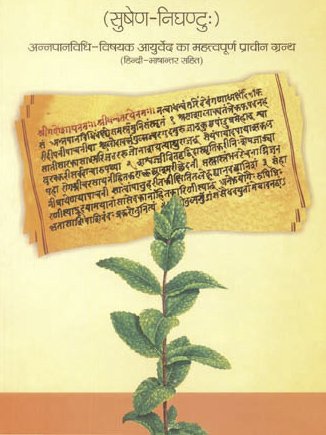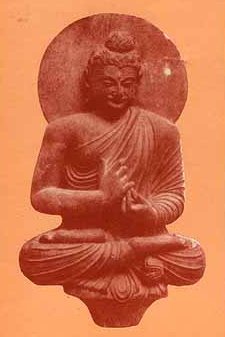Khuddaka, Khuddakā, Khuḍḍaka: 9 definitions
Introduction:
Khuddaka means something in Buddhism, Pali, Hinduism, Sanskrit. If you want to know the exact meaning, history, etymology or English translation of this term then check out the descriptions on this page. Add your comment or reference to a book if you want to contribute to this summary article.
In Hinduism
Ayurveda (science of life)
Source: gurumukhi.ru: Ayurveda glossary of termsKhuḍḍāka (खुड्डाक):—Brief , small or little

Āyurveda (आयुर्वेद, ayurveda) is a branch of Indian science dealing with medicine, herbalism, taxology, anatomy, surgery, alchemy and related topics. Traditional practice of Āyurveda in ancient India dates back to at least the first millenium BC. Literature is commonly written in Sanskrit using various poetic metres.
In Buddhism
Theravada (major branch of Buddhism)
Source: Pali Kanon: Pali Proper NamesName of a tribe. Ap.ii.359.
-- or --
The name given to the section on Pacittiya which occurs in the Sutta Vibhanga of the Vinaya Pitaka. Vin.iv.174, 345.
Theravāda is a major branch of Buddhism having the the Pali canon (tipitaka) as their canonical literature, which includes the vinaya-pitaka (monastic rules), the sutta-pitaka (Buddhist sermons) and the abhidhamma-pitaka (philosophy and psychology).
Languages of India and abroad
Pali-English dictionary
Source: BuddhaSasana: Concise Pali-English Dictionarykhuddaka : (nt.) honey made by a kind of small bees.
Source: Sutta: The Pali Text Society's Pali-English DictionaryKhuddaka, =khudda; usually in cpds. In sequence khuddaka-majjhima-mahā Vism. 100. Of smaller sections or subdivisions of canonical books Vin. V, 145 sq. (with ref. to the paññattis), see also below.—catuppade kh° ca mahallake Sn. 603. Khuddaka (m.) the little one, Miln. 40 (mātā °assa).

Pali is the language of the Tipiṭaka, which is the sacred canon of Theravāda Buddhism and contains much of the Buddha’s speech. Closeley related to Sanskrit, both languages are used interchangeably between religions.
Sanskrit dictionary
Source: DDSA: The practical Sanskrit-English dictionaryKhuḍḍaka (खुड्डक).—a. Small, minor.
Source: Cologne Digital Sanskrit Dictionaries: Edgerton Buddhist Hybrid Sanskrit DictionaryKhuḍḍaka (खुड्डक).—adj., small (see s.v. khudrāka): Saddharmapuṇḍarīka 460.4 (prose; twice); v.l. Kashgar recension for Saddharmapuṇḍarīka 95.5 (verse), text kuṇḍaka, q.v.
--- OR ---
Khuḍḍāka (खुड्डाक).—adj., small (see s.v. khudrāka): Mahāvastu i.302.13 na cāti- (mss. cāpi) khuḍḍākaṃ na cātimahantaṃ.
Source: Cologne Digital Sanskrit Dictionaries: Monier-Williams Sanskrit-English Dictionary1) Khuḍḍaka (खुड्डक):—mfn. (Prākṛt form of kṣudraka) small, minor, [Caraka i, 9] ([varia lectio])
2) Khuḍḍāka (खुड्डाक):—[from khuḍḍaka] mf(īkā)n. idem, [i, 9; iv, 4; vi, 29, 102.]
[Sanskrit to German]
Sanskrit, also spelled संस्कृतम् (saṃskṛtam), is an ancient language of India commonly seen as the grandmother of the Indo-European language family (even English!). Closely allied with Prakrit and Pali, Sanskrit is more exhaustive in both grammar and terms and has the most extensive collection of literature in the world, greatly surpassing its sister-languages Greek and Latin.
See also (Relevant definitions)
Starts with: Khuddaka Tissa, Khuddaka Vatthu, Khuddakamancaka, Khuddakanadi, Khuddakancakunda, Khuddakanikaya, Khuddakapadmaka, Khuddakapatha, Khuddakaraja, Khuddakavagguli, Khuddakavatthu Khandhaka, Khuddakavatthuka.
Ends with: Anukhuddaka, Khuddanukhuddaka, Mahakhuddaka.
Full-text (+43): Khuddakapatha, Khudraka, Khuddakanikaya, Khuddika, Theragatha, Cariyapitaka, Saranattaya, Mahaniddesa, Dhammapada, Khuddulaka, Itivuttaka, Ghanta, Khuddakavagguli, Khuddakanadi, Khuddakamancaka, Anukhuddaka, Khuddakavatthuka, Khuddakaraja, Vattasampanna, Kshudrika.
Relevant text
Search found 35 books and stories containing Khuddaka, Khuddakā, Khuḍḍaka, Khuḍḍāka; (plurals include: Khuddakas, Khuddakās, Khuḍḍakas, Khuḍḍākas). You can also click to the full overview containing English textual excerpts. Below are direct links for the most relevant articles:
Philosophy of language in the Five Nikayas (by K.T.S. Sarao)
2.5(f). Khuddaka Nikāya (Collection of Little Texts) < [Chapter 1 - Introduction]
4. Conclusion < [Chapter 6 - Summary and Conclusions]
5. Sources Of Research < [Chapter 1 - Introduction]
Guide to Tipitaka (by U Ko Lay)
Chapter VIII - Khuddaka Nikaya
Part 18 - Milindapanha Pali < [Chapter VIII - Khuddaka Nikaya]
Part 11 - Niddesa Pali < [Chapter VIII - Khuddaka Nikaya]
The Book of Protection (by Piyadassi Thera)
Charaka Samhita and Sushruta Samhita (by Nayana Sharma)
The Date of Caraka Saṃhitā < [Chapter 1]
Bihar and Eastern Uttar Pradesh (early history) (by Prakash Narayan)
Empirical Relevance of Vanna, Jati and Kula < [Chapter 4 - Social Process, Structures and Reformations]
Kula, Kamma, and Sippa: Inter-relation < [Chapter 4 - Social Process, Structures and Reformations]
Dana versus Yanna < [Chapter 3 - Religious Beliefs, Institutions and Practices: New Perspectives]
The Catu-Bhanavara-Pali (critical study) (by Moumita Dutta Banik)
(4) The Dvattimsakara < [Chapter 2 - Subject Matter of the First Bhanavara]
(1) The Saranagamana < [Chapter 2 - Subject Matter of the First Bhanavara]
Efficiency of Paritta (Buddhist protecting charms) < [Chapter 1 - Introduction]